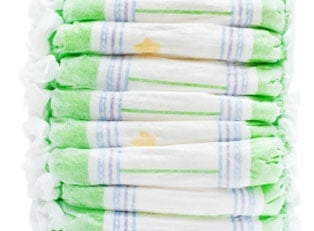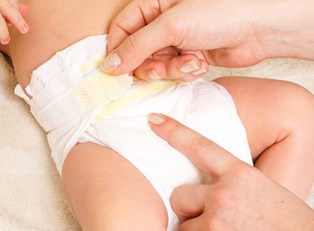A 2013 study investigated the nature of infant tears and how well adults understand those cries. The results stated that parents do not understand them well, particularly for new parents. The study also found that babies cry because of fear, anger, or pain. Two key factors in figuring out the cry were the baby’s eye movement during the cry and the “dynamics of the cry,” according to ScienceDaily. Sometimes babies just need to cry—but there’s a whole world of communication in those tears. Here’s a look at understanding what your baby is trying to tell you.
1. Pain Cries
Unless you see an inciting incident, it is difficult to tell if a baby is in pain or what is hurting. Tummies are often a source of distress for little ones. A stomach ache for a baby might be a need to burp or intense gas. When their tummies hurt, babies tend to curl their knees up.
As the child gets older it becomes easier and easier to figure out where the pain comes from. Until then, here’s a trick from the study: pain cries tend to be accompanied by closed eyes with tension in the brow. Your baby may open her eyes briefly, but the eyes themselves will have “a distant look.” The cry will also start out as a full-blown freakout, while other cries may start low and slowly build.
2. Hunger Cries
Probably 90% of a normal baby’s tears mean, “I’m hungry!” Luckily, this is also the easiest to tend to. Babies sometimes “cluster feed,” or feed much more often than normal. A good general rule of thumb is that if he’s crying and you’ve tried cuddling, sleeping, and changing his diaper, offer milk and see how it works. Similarly, newborns sometimes just need something to suckle -- like a pacifier. Just be wary of overuse, as it can trick him into thinking he’s getting something to eat, even though he isn’t. This is especially true during nap time.
Hunger cries are often a lot like anger cries—he’s angry that he isn’t getting his milk. The 2013 study found that anger cries tend to escalate. While pain cries start at full intensity and continue until the hurt goes away, anger crying starts and keeps getting louder until something is done to relieve his anger.
3. Sleep Cries
Newborns sleep as much as 17 hours a day, in short spurts. Every baby is different, so your baby might prefer a handful of 2-hour naps or several 30-minute naps. In any case, sleep cries tend to be angry and pitiful. Your baby may prefer a little milk before drifting off to sleep. Or she may be so worked up being mad about being tired that she has trouble calming down to go to sleep. Trying gentle rocking and singing until she calms down and passes out.
4. Dirty Diaper Cries
Some infants aren’t very bothered by a wet diaper, while others can’t stand the sensation. Really dirty diapers are more likely to cause a problem. Dirty diaper cries may not be as persistent as other cries. It may periodically be a bother until something else captures his attention. Diaper rash, on the other hand, can be very painful, and that may lead to pain cries in an effort to let you know things are not okay in his little world.
5. Love Me Cries
Aside from food and sleep, perhaps the most important thing your baby needs is love and attention. Without enough cuddling and reassurance, she may give pretty pitiful little wails. Remember that Baby spent the last nine months in a completely secure, dark, warm space where she could always hear your heartbeat and feel the gentle changes of your body as you moved around. Swaddling is a great way to replicate this experience. You can buy products made to swaddle or wrap your baby snugly in a thin blanket. Just remember too much cloth or stuffing in her sleeping area increases suffocation hazards.



